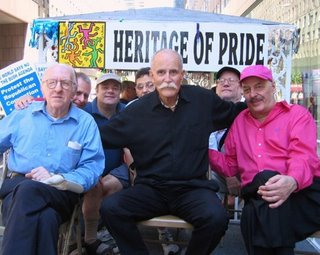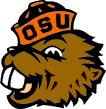AUDIO PLAYER: An interview with the gay marriage pioneers Jack Baker and Michael McConnell was aired on my local public radio station Eugene, OR KLCC-FM (89.7) and Portland, OR KOPB-FM (91.5) Sat. Jun. 6, 2015, as part of a national public radio program "The Takeaway" with John Hockenberry, "The Weekender: Love, Marriage and The Law," WNYC public radio (19 minutes) thetakeaway.org posted June 6, 2015 and Produced by: Jay Cowit and Amber Hall. The show's description says, "The Takeaway explores love and marriage as we await the ruling on the most recent same-sex marriage case before the Supreme Court: Obergefell v. Hodges. First we hear from Michael McConnell and Jack Baker. They met and fell in love in 1967 . . . Michael and Jack discuss the current same-sex marriage case before the Supreme Court, how they think the Court will rule, and where they'll be when the news breaks. This weekend we also hear from Professor and Marriage Analyst Stephanie Coontz. She joins us to weigh in on the difference between the institution and the relationship. . ." See my previous posts:
A Jun 8, 2015 personal communication to me from Michael McConnell said of the interview, "Unfortunately, they didn't plug the book, a disappointment to me. They got good quotes in from Jack though. I'm happy with that."
Mike is right to be disappointed, but the business and politics of book plugging, especially on the non-commercial public radio, often requires the help of a skilled publisher to make it happen. In my business experience, book plugging was hard to do even on a commercial program sponsored by my own company because there was always a tension between the business people, who wanted to do it only quid pro quo, and the creative program producers who hated doing it because they thought it lowered respect for their journalistic integrity, which I tend to agree with as being true -- people will often dismiss an interview that looks like it is just a book plug.
My notes on the radio program by John Hockenberry, "The Weekender: Love, Marriage and The Law," WNYC public radio (19 minutes) thetakeaway.org posted June 06, 2015 and Produced by: Jay Cowit and Amber Hall:
Host John Hockenberry starts by playing an original audio recording of the Sept. 1971 wedding of Jack Baker and Michael McConnell, which sounds remarkably boring -- yes, this is intended as a compliment by me! Another observation, which I also intend as a compliment, is that Jack Baker comes off sounding exactly like the typical Silicon Valley pioneers who I got to personally know while working for Hewlett-Packard on the Stanford University campus in the 1970's to 1980's, especially the Apple cofounder Steven Jobs, because during the radio interview Jack Baker comes off as a cocky and arrogant visionary, just as do most Silicon Valley entrepreneurs, who have envisioned revolutionary changes decades before most people will understand the importance of it (e.g. Job's vision of personal computers designed for all humans instead of just engineers, and the vison of marriage equality in the case of Jack Baker).
I can testify to the fact that Baker's visionary persona is not just a fabricated put-on for this radio show because I witnessed his leadership firsthand in the 1970's when I was an undergraduate student at the University of Minnesota. For example, similar to how Steve Jobs irritated people who thought all computers should be like a Control Data or IBM mainframe, Jack Baker irritated his contemporaries, such as Steven Endean, who was the founder of the Human Rights Campaign that rejected gay marriage as being harmful to his vision of assimilating gay rights into the Washington, D.C. lobbying protocols. Similar to the computer visionaries, both approaches had strategic advantages and disadvantages -- Endean's approach was to politically win equal rights for gay people with small incremental steps that would not pose any risk of a political backlash that could set back the movement, whereas Jack Baker stood up for a revolution based on longstanding principles of all men are created equal, similar to how Steve Jobs stood up for the revolutionary principle that computers should be designed to be used by all humans and not just engineers.
I am superstitious and so I always worry about being jinxed when a visionary assumes victory, as Jobs was famous for doing. I cringed during the radio interview when Mike said, "We predicted this 45 years ago," and Jack calmly and confidently added that he was confident the Court "wouldn't do anything vastly different from the rest of the world" or "silly" because that would "make the Court look foolish" and put the Court on the "wrong side of history." While I agree with Jack's logic 100 percent, I am still crossing my fingers!
The last part of the radio show includes an interview of Professor and Marriage Analyst Stephanie Coontz, who has authored a book on the history of marriage that I have been unable to read yet due to my low vision blindness. I will reserve any judgment until I read her book, but I loved her response to the accusations by anti-gay marriage groups that gay marriage is "redefining marriage." She made the case that it was heterosexuals who redefined marriage in ways that made it more inclusive to both childless heterosexual couples and gay couples. In my experience, each of the changes she mentioned, such as women gaining equality in the workplace, were fiercely opposed, as they were occurring, by traditional marriage advocates, such as the Catholic Church.
(Note: Also, see "Special Series Same-Sex Marriage And The Supreme Court" from National Public Radio and "Special Series Same-Sex Marriage and the Supreme Court, Timeline: Gay Marriage In Law, Pop Culture And The Courts," npr.org posted June 26, 2013: "1972 - In Baker v. Nelson, the U.S. Supreme Court dismisses a challenge of a ruling from Minnesota that gay couples have no constitutional right to marry, saying the appeal fails to raise a "substantial federal question."")











